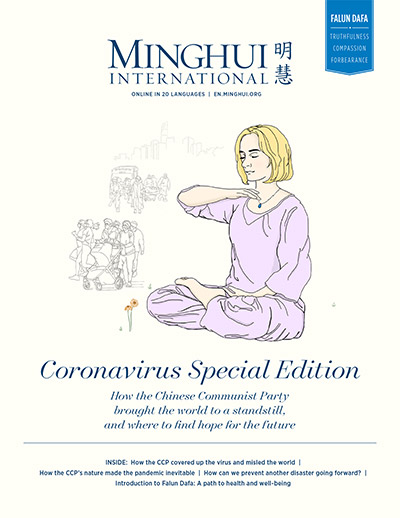(Minghui.org) On November 26, the World Health Organization (WHO) designated a new coronavirus strain as Omicron, the 15th Greek letter. Three days later, the WHO labeled Omicron a variant of “very high” risk and with possible “severe consequences.”
Health experts around the world have been evaluating three questions: whether Omicron is more transmissible, whether it is more deadly, and whether the existing vaccines are effective for this new strain.
In addition, a 7.5 magnitude earthquake struck northern Peru on November 28, destroying many homes and causing over 120 injuries.
WHO: Harm of Omicron Remains Unclear
The data from South Africa was cited by WHO to evaluate the risk of Omicron variant. The number of daily new cases in the country had been lingering at the 200s in the past few weeks, but it rose sharply to more than 3,200 on November 27 with the majority of cases in Gauteng, a province where Johannesburg is located. Tulio de Oliveira, the director of the Centre for Epidemic Response and Innovation in South Africa, said 90% of the new cases in the province was caused by Omicron.
Although dozens of new variants emerge and spread every day, only a small number of variants raise major health concerns. They are classified by the WHO as Variants of Concern (VOC), Variants of Interest (VOI), and Variants Under Monitoring (VUM).
More specifically, there are five VOC strains, namely, Alpha (first identified in UK), Beta (South Africa), Gamma (Brazil), Delta (India), and Omicron (South Africa). Two VOI strains are Lambda (Peru) and Mu (Columbia). VUM are strains that may pose a future health risk.
Omicron, whose medical name is B.1.1.529, has 32 mutations in its spike proteins, combining some mutations from previous strains such as Alpha, Gamma, and Lamda. Preliminary evidence collected by the WHO indicated an increased risk of reinfection. In addition, the large number of mutations may help the virus evade the immune system.
It remains unclear whether Omicron will increase transmissibility, enhance virulence, or decrease the effectiveness of vaccines. The WHO said it was waiting for more data in the next few weeks before it can conduct more analysis and confirm the effectiveness of vaccines against Omicron.
Omicron has prompted more and more countries to restrict or ban travel to and from South America and some other countries. The United States implemented travel restriction on South Africa and 7 other African countries starting on November 29. The European Union has agreed to ban air travel from South Africa. Japan also announced travel restrictions on 9 African countries, with individuals with potential exposure under quarantine for 10 days at designated places.
Earthquake in Peru
An earthquake of 7.5 magnitude hit northern Peru on the morning of November 28. The epicenter was 42 kilometers (or 26 miles) from the coastal city of Barranca, and the quake was felt by more than half of the country, including the capital city of Lima. It also caused damage in the neighboring country of Ecuador.
The earthquake struck at 5:52 a.m at the remote Amazon Rain Forest. The seismological center of the Geophysical Institute of Peru stated the earthquake had a depth of 131 kilometers (81 miles).
Local residents reported shaking ground at the time. As of November 29, the Peru government reported that at least 120 people were injured and over 200 buildings were damaged. Among the damaged buildings, more than 70 totally collapsed. A Catholic church tower from the 16th-century also partially collapsed. Other damage ranged from power outages to road blockages by fallen rock.
All articles, graphics, and content published on Minghui.org are copyrighted. Non-commercial reproduction is allowed but requires attribution with the article title and a link to the original article.
Category: Media Reports








